2 WW2 Kriegsmarine WWII German Ring U-Boat Germany U-Boot Unterseeboot NAVY Army
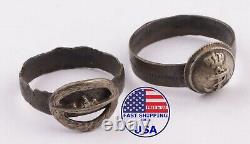
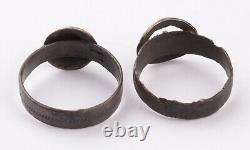
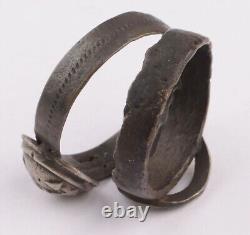
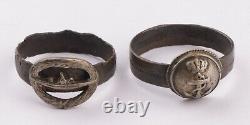
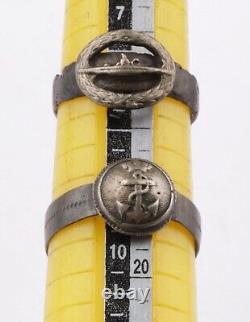
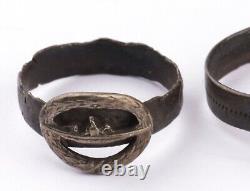
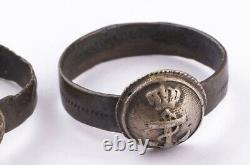
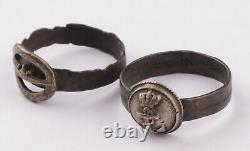
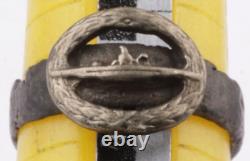
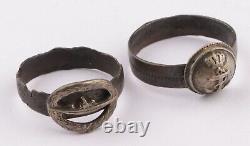
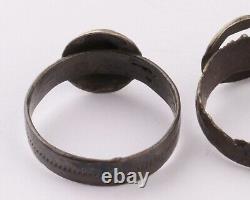
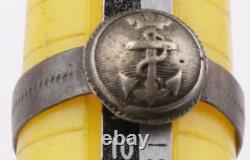
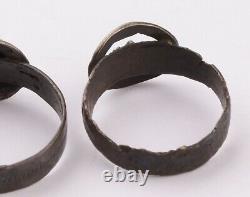
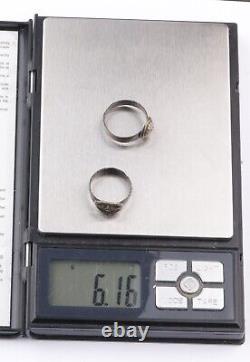

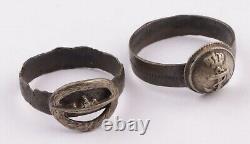

2 WW2 Kriegsmarine WWII German Ring U-Boat Germany U-Boot Unterseeboot NAVY Marine Jewelry Silver Badge on Bronze Ring #45. Size US 8 22.5x20.5x11 mm 18.2 mm 3 g. Size US 9.5 25x21.5x11 mm 19.4 mm 3.16 g.
During World War II, U-boat warfare was the major component of the Battle of the Atlantic, which began in 1939 and ended with Germany's surrender in 1945. British Prime Minister Winston Churchill later wrote The only thing that really frightened me during the war was the U-boat peril. Cross-Atlantic trade in war supplies and food was extensive and critical for Britain's survival.
As convoying had been key in the defeat of German submarines during World War I, the British began organizing convoys at once in September 1939. The most common U-boat attack against convoys during the early years of the war was conducted on the surface and at night. During 1939 the Germans made a few attempts to attack convoys with their new'wolfpack' tactic, but these were not successful. During the invasion many technical problems with the German torpedoes were exposed and only in August 1940 could the campaign against convoys be revived. There were now less U-boats operational than at the beginning of the war, but thanks to the new bases in France and Norway U-boats could reach their operation grounds far more easily. During next months the U-boats put their'wolfpack' tactic against convoy in practise with spectacular results. This period, before the Allied forces developed truly effective antisubmarine warfare tactics was referred to by German submariners as "die glückliche Zeit" or the First Happy Time. In the beginning of 1941 British countermeasures began to take effect: in March 1941 the three leading U-boat aces were sunk during convoy battles.In May 1941 the British were able to break into German secret naval Enigma communications and could henceforth rerout convoys around U-boat concentrations. When American warships started to escort Atlantic convoys, the U-boats were restricted in their operations as Hitler wanted to avoid possible conflict with the US.
When the US entered war, the focus of U-boat operations shifted to the Atlantic coast of the United States and Canada, where no convoys were organized and anti-submarine measures were inadequate. There followed a Second Happy Time when U-boats could extend their successful operation to the Gulf of Mexico and the Caribbean Sea. But the Allies put effective countermeasures into effect and only two months later on 24 May Dönitz had to stop the campaign due to heavy losses.U-boats operated also off the southern African coasts and even as far east as the Arabian Sea and Indian Ocean. In total 1131 U-boats entered service before the German surrender, of which 863 have executed war patrols, and 785 were lost. Of the 154 U-boats surrendered, 121 were scuttled in deep water off Lisahally, Northern Ireland, or Loch Ryan, Scotland, in late 1945 and early 1946 during Operation Deadlight.
The U-boats' main weapon was the torpedo, though mines and deck guns (while surfaced) were also used. Early German World War II torpedoes were fitted with one of two types of pistol triggers - impact, which detonated the warhead upon contact with a solid object, and magnetic, which detonated upon sensing a change in the magnetic field within a few meters. Initially, the depth-keeping equipment and magnetic and contact exploders were notoriously unreliable. This was most evident in Operation Weserübung, the invasion of Norway, where various skilled U-boat commanders failed to inflict damage on British transports and warships because of faulty torpedoes. The faults were largely due to a lack of testing.
The magnetic detonator was sensitive to mechanical oscillations during the torpedo run, and to fluctuations in the Earth's magnetic field at high latitudes. Thank you for your time in opening the page and reviewing my items!
If you have any questions - please write me! If you add me to your favorite sellers, you will be the first to know about new products from my store.
